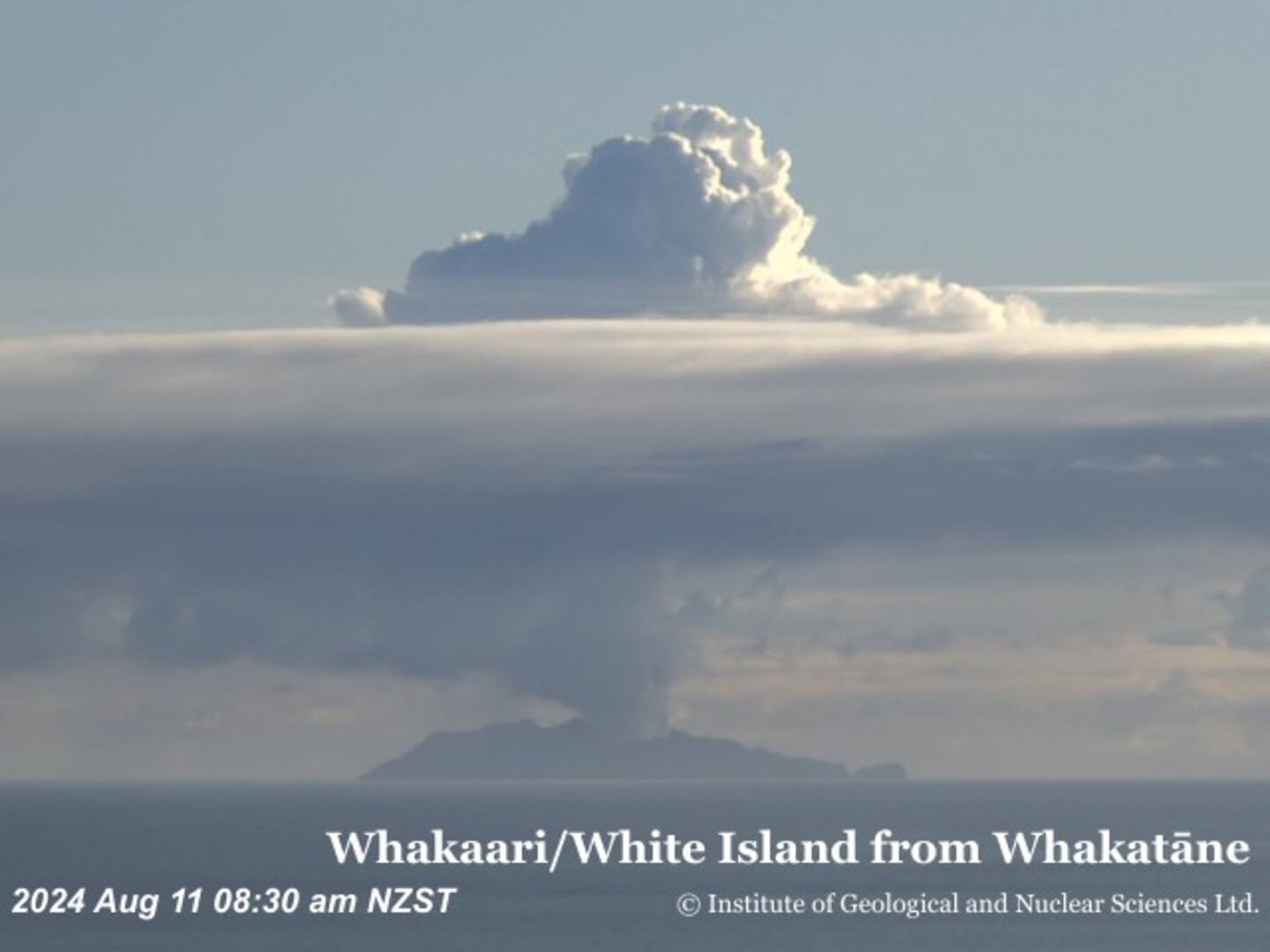“Regular” eruptions on Whakaari/White Island are likely to continue after indications that magma (molten rock) has risen to shallow levels beneath the volcano, a volcanologist says.
It comes after GNS Science said on Friday there had been a minor eruption at the island. It raised the volcano alert level to three and the aviation colour code to orange, both signifying a minor eruption.
On Sunday, GNS Science said a “continuous minor eruption” had started overnight and continued into the morning, creating a 1km to 2km high ash plume.
The geological institution said short-lived steam and ash emissions could continue for some time. Whakaari’s last minor eruptions were in late May.
Adventure cameraman Geoff Mackley chartered a boat to the marine volcano on Saturday and used a drone with a “powerful” zoom to capture footage of the crater from near the shoreline.
A GNS Science media release on Monday said an increase in sulphur dioxide emissions in combination with the minor volcanic eruptions observed on the weekend suggested there was magma in the shallow system at Whakaari.
Clouds above Whakaari were making it difficult to confirm whether the minor eruption on Sunday had finished.
If activity was continuing, there would be a low probability of any ash affecting the mainland.

Webcam image of Whakaari/White Island viewed from Whakatāne on Sunday. Photo / GNS Science
The statement said TRO-POMI - a satellite capable of measuring daily sulphur dioxide emissions - “clearly detected” sulphur dioxide emissions from Whakaari on Sunday.
This was the first time sulphur dioxide emissions had been detected by the satellite since the activity that started in May.
“TRO-POMI is less sensitive than our regular gas flights and hence this suggests SO2 emissions from Whakaari have increased.
“We will be conducting a gas observation flight when conditions allow to confirm this.”
It said the minor eruptions with ash emissions observed on the weekend and the increase in sulphur dioxide emissions indicated that magma had ascended to shallow levels beneath Whakaari.
“Shallow magma could cause high-temperature gas venting, which will likely cause regular eruptive activity to continue.
“We are currently observing intermittent minor volcanic eruptions, with eruption hazards largely restricted to the island, and importantly, there is no current indication that activity will increase in magnitude.”
The statement said GNS Science would continue to closely monitor volcanic activity at Whakaari with remote cameras and satellite imagery.
“Without an on-island monitoring network, changes in activity could occur at short notice and changes in volcanic alert level may be delayed depending on monitoring conditions.
“We will provide updates when information becomes available.”
The active volcano offshore of Whakatāne has been closed to tourists since a 2019 eruption killed 22 people.
Take your Radio, Podcasts and Music with you









